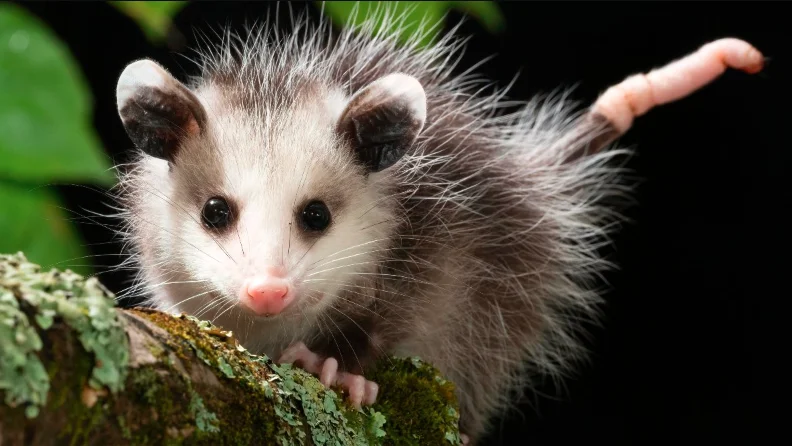The “tñacuache” is one of the most intriguing creatures found in nature and folklore. This small marsupial, often misunderstood, plays an essential role in ecosystems and cultural traditions. Throughout history, the tñacuache has been a symbol of survival, adaptability, and mystery. This article explores its characteristics, habitat, significance in mythology, and its role in the environment.
What is a Tñacuache?
The tñacuache, commonly known as an opossum in English, is a nocturnal marsupial found primarily in the Americas. It belongs to the Didelphidae family and is recognized for its rat-like tail, sharp claws, and unique ability to play dead when threatened. Despite its somewhat eerie appearance, the tñacuache is an important part of the ecosystem, helping to control insect populations and acting as nature’s cleaner by consuming carrion.
Physical Characteristics of the Tñacuache
Tñacuaches vary in size depending on the species, but most are small to medium-sized mammals. They have long, prehensile tails that help them climb trees and maintain balance. Their fur is typically a mix of gray and white, with a pointed snout and dark beady eyes. Their sharp teeth allow them to eat a wide variety of foods, making them highly adaptable creatures.
One of the most fascinating traits of the tñacuache is its ability to enter a catatonic state when facing danger. This defense mechanism, commonly referred to as “playing dead,” confuses predators and gives the animal a chance to escape unharmed.
The Habitat of the Tñacuache
Tñacuaches are highly adaptable and can thrive in various environments, including forests, urban areas, and even farmlands. They prefer habitats with plenty of vegetation, where they can hide from predators and find food easily. They are excellent climbers, often seen navigating trees and bushes with ease.
These creatures are commonly found in North, Central, and South America. They are particularly widespread in Mexico, where they are often spotted in suburban neighborhoods searching for food scraps.
The Role of the Tñacuache in the Ecosystem
Tñacuaches are known as nature’s janitors due to their scavenging habits. They consume dead animals, reducing the spread of diseases in the environment. Additionally, they help control insect populations by feeding on pests such as cockroaches, beetles, and ticks. Some studies suggest that opossums can consume thousands of ticks in a single season, making them beneficial for controlling Lyme disease and other tick-borne illnesses.
Tñacuache in Mythology and Folklore
The tñacuache holds a special place in folklore, particularly in Mesoamerican mythology. Many indigenous cultures consider it a trickster figure, known for its cunning and intelligence. In some Mexican legends, the tñacuache is credited with bringing fire to humans by stealing a flame from the gods. This story highlights its reputation as a clever and resourceful animal.
In other cultures, the tñacuache is seen as a sign of luck or an omen, depending on the circumstances in which it is encountered. Some believe that seeing a tñacuache at night is a symbol of change or transition, reflecting its ability to adapt and survive in challenging conditions.
The Tñacuache as a Survivor
One of the most remarkable aspects of the tñacuache is its ability to survive in harsh environments. Unlike many mammals, it has a high resistance to venomous snake bites, which allows it to prey on snakes without suffering serious consequences. This adaptation has helped it thrive in areas where other small mammals might struggle to survive.
Tñacuaches also have a strong immune system, making them less susceptible to rabies compared to other wild animals. This characteristic helps reduce the spread of the disease, benefiting both wildlife and humans.
Human Interaction with the Tñacuache
Although tñacuaches are often misunderstood and feared due to their appearance, they are generally harmless to humans. They prefer to avoid confrontation and will only resort to defensive behaviors if threatened. In urban areas, they can sometimes be seen rummaging through garbage bins in search of food, leading to conflicts with homeowners.
Despite this, some people appreciate the presence of tñacuaches for their ecological benefits. In recent years, there has been growing awareness of their role in controlling pests and maintaining environmental balance. Some wildlife organizations even advocate for the protection of tñacuaches, encouraging people to coexist peacefully with these nocturnal creatures.
Tñacuache Conservation and Threats
While tñacuaches are not considered endangered, they face several threats, including habitat destruction, road accidents, and attacks from domestic pets. Urban expansion has reduced their natural habitats, forcing them to adapt to human environments where they are more vulnerable to dangers.
In some regions, they are also hunted for food or killed due to superstitions. Educating communities about the ecological importance of tñacuaches can help reduce unnecessary killings and promote conservation efforts.
How to Help Protect the Tñacuache
There are several ways to protect tñacuaches and support their conservation:
- Avoid using pesticides: Since tñacuaches consume insects, reducing pesticide use helps maintain a healthy food chain.
- Provide safe spaces: Leaving natural areas undisturbed in backyards or parks can give them a safe habitat.
- Drive cautiously: Being mindful of wildlife while driving can prevent road accidents involving tñacuaches.
- Educate others: Spreading awareness about the importance of tñacuaches can change negative perceptions and promote coexistence.
The Future of the Tñacuache
As urbanization continues, the relationship between humans and tñacuaches will become increasingly important. With proper education and conservation efforts, these unique creatures can continue to thrive alongside people. Encouraging a better understanding of tñacuaches can lead to more positive interactions and appreciation for their role in nature.
Conclusion
The tñacuache is an extraordinary animal that deserves recognition for its ecological contributions and cultural significance. Despite being misunderstood and sometimes feared, it plays an essential role in maintaining environmental balance. Through conservation efforts and increased awareness, we can ensure that tñacuaches remain a thriving part of our natural world. Their adaptability, intelligence, and resilience make them a fascinating species worth protecting for generations to come.




